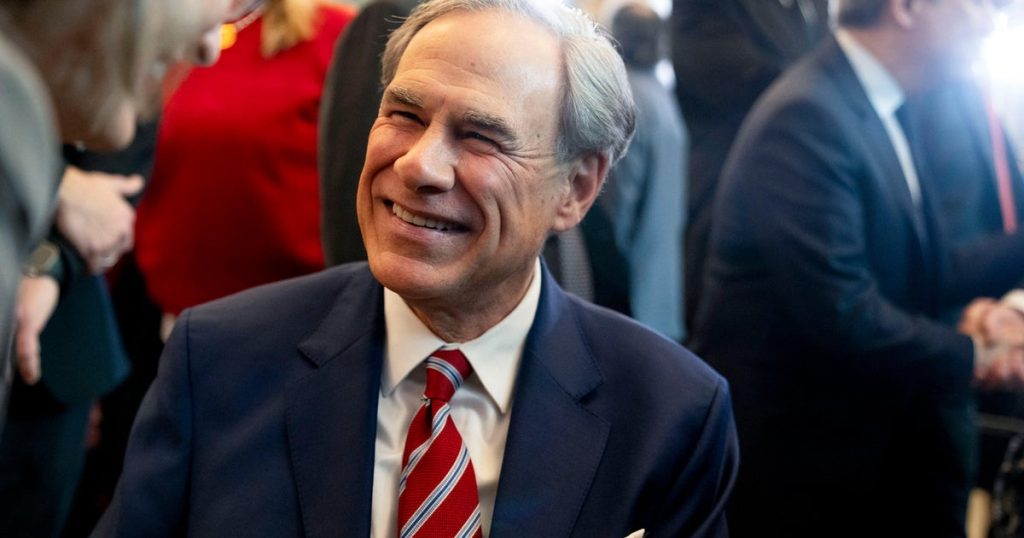Texas Governor Greg Abbott has officially enacted a contentious $1 billion school choice bill that permits the use of taxpayer funds to assist eligible students in financing private school tuition. This landmark legislation has drawn considerable attention, with supporters claiming it enhances educational access while critics argue it undermines public education. With backing from notable figures including former President Donald Trump, the bill’s passage marks a significant shift in Texas education policy, addressing long-standing debates about funding and educational equity.
| Article Subheadings |
|---|
| 1) Overview of the Legislation |
| 2) Key Supporters and Their Statements |
| 3) Legislative Journey and Approval |
| 4) Funding Structure and Eligibility Criteria |
| 5) Opposition Perspectives and Concerns |
Overview of the Legislation
The newly enacted school choice legislation allows taxpayers to fund private education, specifically through a voucher system. Under this law, qualified families can receive significant financial support to attend accredited private schools, aiming to provide more educational options beyond the traditional public schooling system. The bill, which reflects growing national trends towards school vouchers, aligns Texas with other states that have implemented similar programs. Proponents argue that the legislation empowers parents to make choices based on their children’s needs, while also aiming to foster competition among schools, potentially benefiting all students.
Key Supporters and Their Statements
Support for the bill has come from various notable figures within Texas political circles. Governor Greg Abbott expressed that the legislation is a “culmination of a movement that has swept across the state and our country,” emphasizing its importance for Texas families. Additionally, former President Donald Trump took to social media to commend Texas lawmakers on passing this significant education reform, labeling it a “victory for students and parents” throughout the state. Trump’s endorsement came shortly after he signed an executive order aimed at promoting school choice, reinforcing the bill’s anticipated national significance. Other key supporters include Lieutenant Governor Dan Patrick and Speaker Dustin Burrows, who also emphasized the importance of providing families with educational options that suit their particular circumstances.
Legislative Journey and Approval
The legislative journey of the school choice bill was marked by extensive debate and negotiation, ultimately culminating in its approval on April 24 with a vote tally of 19-12. The Texas House had approved the bill just a week earlier in what was described as a historic vote, as it marked the first instance of such a bill gaining traction in the House. The Senate had also passed similar legislation several times previously, typically with support from a divided chamber. The passage of the bill was seen as a milestone achievement for its advocates, signaling a turning point in the way education is funded and structured in Texas.
Funding Structure and Eligibility Criteria
The $1 billion school choice program is structured to provide substantial financial assistance to various categories of students. Most families with children attending accredited private institutions will receive approximately $10,000 annually. For students with disabilities, this amount increases up to $30,000 per year, while home-schooled students will qualify for $2,000 annually. This tiered funding system is designed to address varying educational needs, emphasizing inclusivity. Supporters believe this approach can enhance overall educational outcomes by allowing families to select schools that align with their children’s specific learning requirements.
Opposition Perspectives and Concerns
Despite the enthusiasm among supporters, the new legislation has sparked significant backlash from various opponents, primarily Democrats and public education advocates. Critics assert that the program primarily benefits wealthier families who already have the means to access private education, ultimately diverting much-needed resources away from public schools. State Senator Sarah Eckhardt voiced concerns that the bill would siphon crucial funds from an already underfunded public education system, stating that it disproportionately favors a small population of students who are mostly already enrolled in private institutions. State Representative Jolanda “Jo” Jones similarly condemned the bill, labeling it as “welfare for the wealthy” and accusing Governor Abbott of betraying Texas students by favoring private interests over public education.
| No. | Key Points |
|---|---|
| 1 | Governor Greg Abbott signed a $1 billion school choice bill into law. |
| 2 | The bill permits taxpayer money to aid in private school tuition for qualifying students. |
| 3 | Former President Donald Trump endorsed the bill as a victory for Texas families. |
| 4 | Funding varies, with $10,000 for most, $30,000 for students with disabilities, and $2,000 for home-schooled students. |
| 5 | Critics argue the bill undermines public education and mainly benefits wealthier families. |
Summary
The passage of the school choice bill in Texas represents a pivotal moment in the state’s educational landscape, raising questions about funding, accessibility, and educational equity. Supporters view it as a step towards empowering families, while opponents caution against its potential to detract from public schools. As the implementation of the new law begins, its impact on Texas education remains to be seen, highlighting ongoing debates surrounding educational reform and funding allocations.
Frequently Asked Questions
Question: What does the school choice bill entail?
The school choice bill enables taxpayers to support private school tuition for qualifying students, thereby allowing families greater educational flexibility and options.
Question: How much funding will students receive under this program?
Most students attending accredited private schools will receive approximately $10,000 per annum, while students with disabilities may receive up to $30,000, and home-schooled students will get $2,000 yearly.
Question: What are the main criticisms of the school choice bill?
Many critics argue that the bill primarily favors wealthier families, undermines public education funding, and could siphon critical resources away from schools that serve the majority of students.


